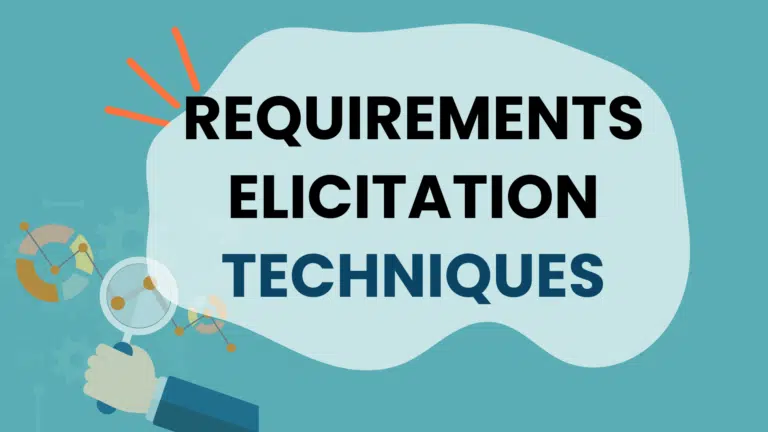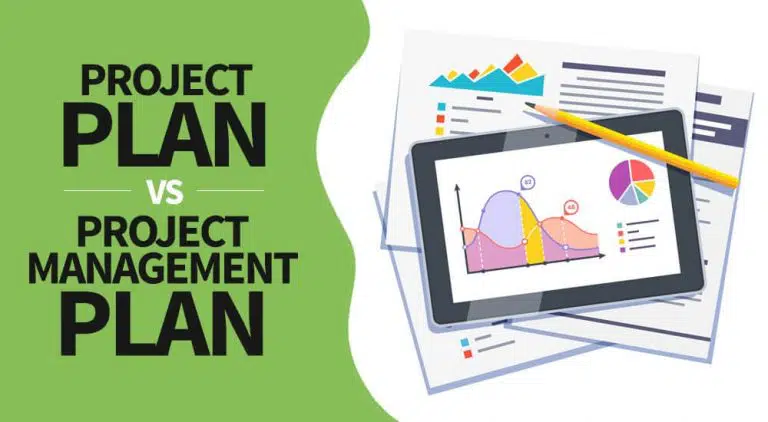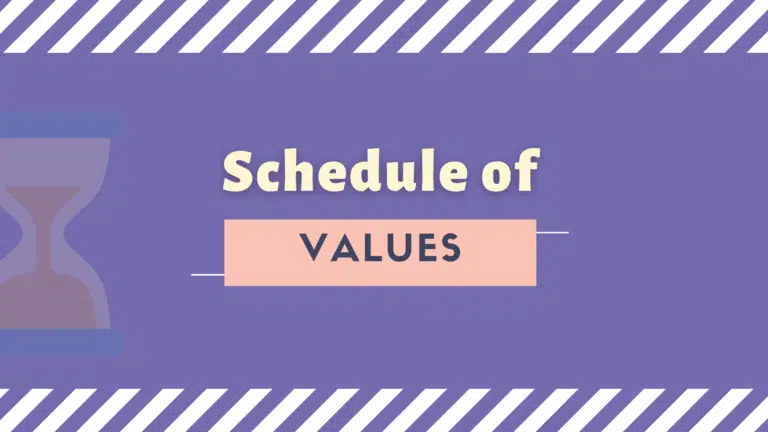Today, we will discuss the creative brief, its definition, and examples and provide you with a few templates and more.
To successfully manage and complete a project, all stakeholders must know the project objectives and strategies and be on the same page from the beginning. The creative brief helps you achieve this goal.
This document binds your stakeholders together and helps you get their support.
Let’s discuss it in more detail.
What is a Creative Brief?
A creative brief is a written document that guides and inspires project stakeholders. It includes project details, history, objectives, scope, budget, timelines, expected outcomes, and more.
The creative brief ensures that stakeholders understand the project’s requirements and expectations.
This document results from a collaboration among different departments of an organization. You can share it with clients and stakeholders to understand the project and its benefits.
It is a dynamic document and is updated throughout the project lifecycle.
Types of Creative Briefs
A creative brief can be of many types. It can be broad, cover the complete project or serve a specific purpose.
A few common types of creative briefs are:
- Marketing Creative Brief
- Advertising Creative Brief
- Product Design Creative Brief
Marketing Creative Brief
This creative brief provides details on taking the campaign to market. You can use this creative brief for new or existing campaigns. This brief will show what strategy you will use to generate product interest in the audience and how to collect the leads.
Advertising Creative Brief
Advertising agencies use this creative brief to inform clients about advertising campaigns. Here they show what kind of ad they will run, such as television ads, social media, search engines ad, print media ads, etc.
It will include ad goal, budget, duration, KPI for advertisement, etc.
Product Design Creative Brief
The product development team uses this creative brief to explain product features to stakeholders. This creative brief can be used for new product designs or product updates. It includes all product details, such as its function, features, and further updates planning.
It will explain the pain points the product intends to solve, how users will benefit from it and how it differs from other similar products on the market.
Five Key Elements of a Creative Brief
Every creative brief is unique and can have different elements. However, you will find one or more elements from these five:
- The Business: It is best to start a creative brief with a short business introduction. Here, you can explain your organization’s value, mission, goal, objectives, and how the product aligns with the business objectives.
- The Product: A project produces an output or a product. The creative brief must include all details about a product, its function, and features, and it will solve users’ problems. You can shed light on the product lifecycle.
- The Market: A market can be a blue ocean or a red ocean. It is a combination of 3C (customer, competition, and company). These three factors will determine your marketing campaign strategy.
- The Customers: These are product users, and the creative brief must provide detailed information on the target audience. You can provide information on age, sex, income, habits, and interests. A deep understanding is required for a customer persona to develop a useful product.
- The Campaign: You can have one or more campaigns simultaneously. Include the type of campaign, the campaign objective, what action you want from your audience, the main challenge, the campaign addresses, etc. You can include the campaign duration and budget.
The Characteristics of a Creative Brief
A creative brief is unique to a project. Here are a few characteristics of a creative brief.
#1. It Provides a Contextual Background
A creative brief provides project justification.
It answers the following:
- Why is the project important?
- What challenges are met?
- What opportunities are given?
- What benefit will the project bring to the organization?
A creative brief doesn’t include every small detail but should highlight the critical and relevant information.
#2. It Identifies the Target Audience
A creative brief shows what user needs the project will address. Understanding the user is a must to develop deliverables.
For example, if you create a product, you need to know its target customers, their needs, preferences, interests, and income levels. If they are satisfied with the product, the project is successful.
#3. It Provides Details on Deliverables
The role of the project manager is to satisfy stakeholders. Therefore, you must collect their requirements and expectations.
If a project is completed without considering the stakeholders’ requirements, you will face issues in the later stages of the project. To complete the project, you must focus on stakeholder requirements and ensure meeting their expectations.
#4. It Provides the Communication Path and the Messaging
The creative brief identifies the critical information to be shared with the target audience. It answers the following questions:
- What should be communicated with clients?
- When and how often should it be communicated?
Communication is critical to the client’s perception of your product. Therefore, you should have a stakeholder communication plan and stakeholder engagement strategy.
#5. It Communicates the Brand and the Campaign
The creative brief provides the project’s particulars, like product specifications and guidelines, that can be used for product promotion and marketing.
Examples of the particulars include color, size, and tone. Marketers use this section to find the information to attract customer attention.
#6. A Creative Brief Provides the Project Essence
The creative brief describes the project objective and business reason for initiating the project. It unifies the purpose and clarifies the target. A project’s objective is to meet the client’s needs and benefit realization.
#7. Provides Organizational Structure
The creative brief provides the hierarchical structure of the organization and the project. It lists decision-makers and key stakeholders. This document further defines roles and responsibilities, sets limits, prevents conflict, and allows seamless workflow.
#8. Details on Key Milestones
A creative brief details when the project is expected to start and end and the due dates for key milestones. These specifics help avoid unnecessary delays and ensure launch dates.
#9. Ways and Means of Promotion
Creative briefs provide the best venue to promote the product to the targeted audience. It determines designs, styles, and the scale of promotion.
#10. Provides the Budget and Identifies Competitors
A creative brief reviews the competitive environment and market trends to determine how to stay relevant. This document compares competitors’ products and provides the project budget based on realistic estimations.
A creative brief gives a detailed account of a project. With this document, you can picture the entire spectrum.
Benefits of a Creative Brief
A creative brief articulates a vision, provides expectations, and identifies the target audience. Still, there are more reasons why you will need it.
#1. Saves Time and Cost
A creative brief provides project timelines, sets priorities, and lets stakeholders track the project’s progress. It clarifies tasks and responsibilities, reduces conflict, and saves time and cost. It helps avoid a last-minute rush to make changes.
It makes approvals faster. The structured processes with a broad view and specificity shorten the approval times.
#2. Accountability, Creativity, and Communication
The creative brief promotes accountability, creativity, and effective communication. An effective team is collaborative and diversely talented. It outlines the expectation, which encourages innovation.
It eases communication between the client, the project management team, and other stakeholders.
#3. A Creative Brief Improves the Product Quality
In addition to accountability, creativity, and communication, this document increases product quality. A well-designed creative brief makes contributors motivated and helps hit targets.
It reduces error and leads to a high-quality outcome.
#4. A Creative Brief is a Reusable Document
In addition to guaranteeing a high-quality product, a creative brief is valuable after the project ends. It can be referenced or used as a template in the future. This document is part of the organizational assets.
How to Write a Creative Brief?
Writing a creative brief requires collaboration from a multi-discipline team.
For example, an innovative team will express their views; the marketing staff will gather customer and competitor information, and accountants will provide financial information. A collaboration of different ideas helps develop a creative brief.
Apart from identifying aims, objectives, audience, and context, a creative brief details the company’s business profile, adds technical needs, and identifies potential challenges and risks. You must provide your details so clients can contact you in emergencies.
Include the company purpose, vision, structure, the project’s technical requirements, and pinpoint team members for the roles.
You cannot find a solution until you assess the problem. Therefore, identify key project risks and their response plans.
Examples of Creative Brief
Here, I will show you three examples of a creative brief.
1. Creative Brief Example of Colgate
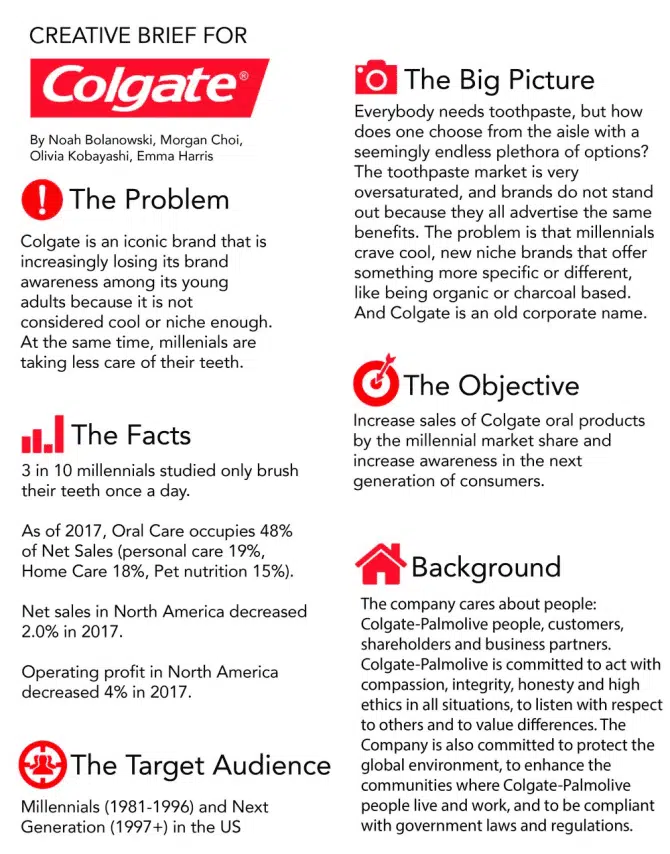
2. Creative Brief Example of Reebok
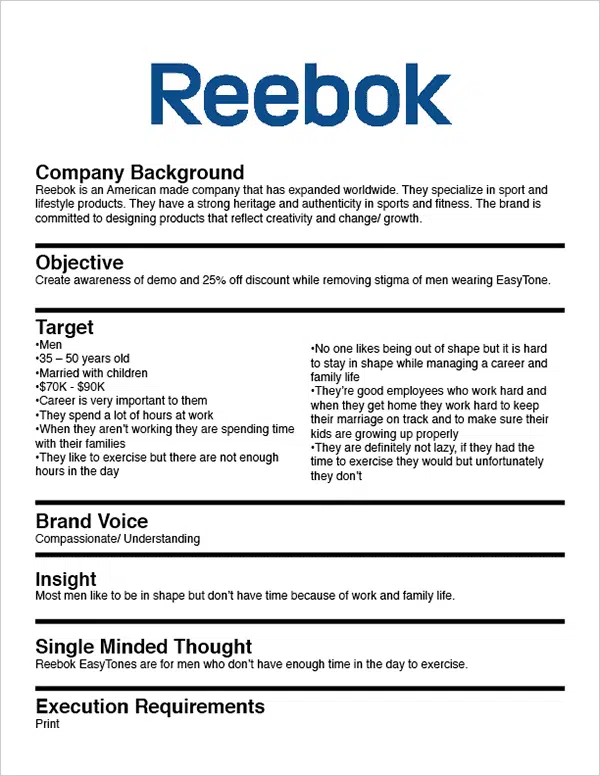
3. Creative Brief Example of PayPal
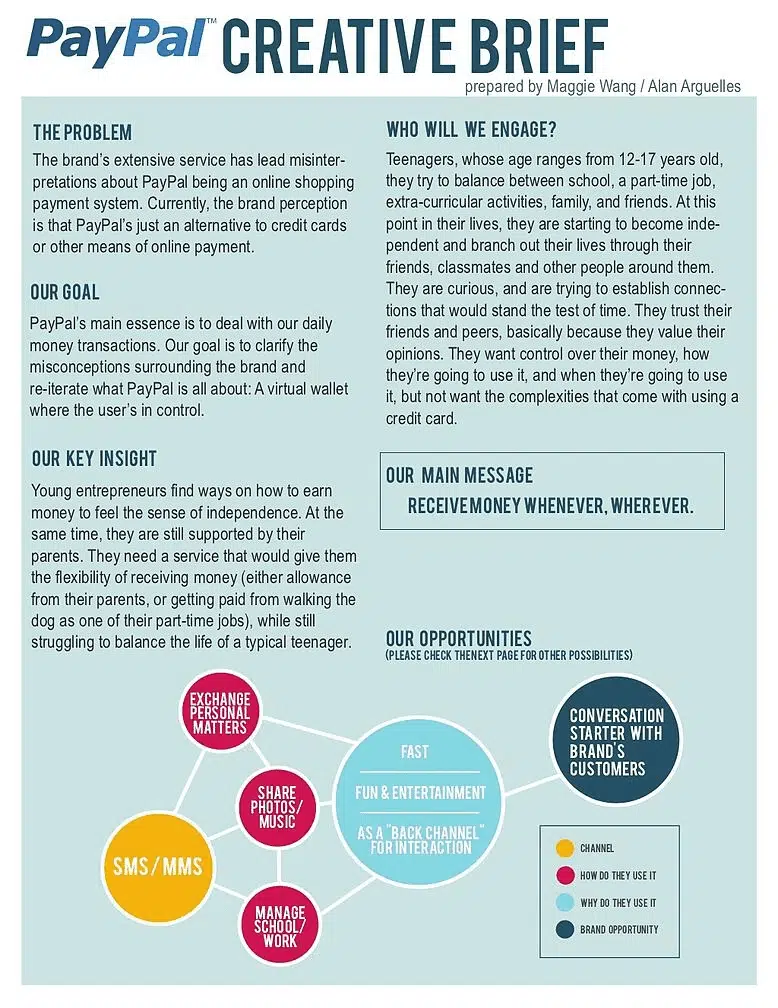
Templates for a Creative Brief
We have discussed three types of creative briefs; therefore, I will provide you with the templates for those creative briefs.
Templates for Marketing Creative Brief
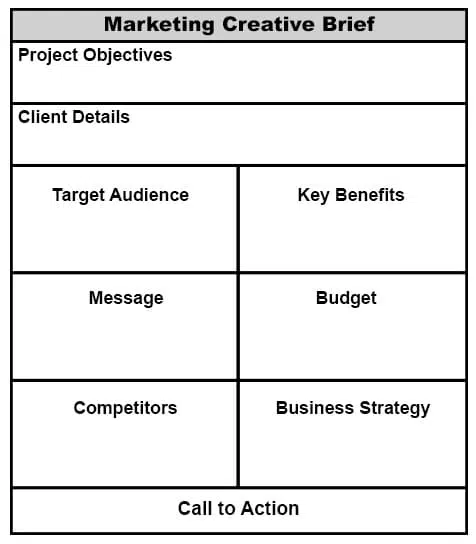
Template for Advertising Creative Brief
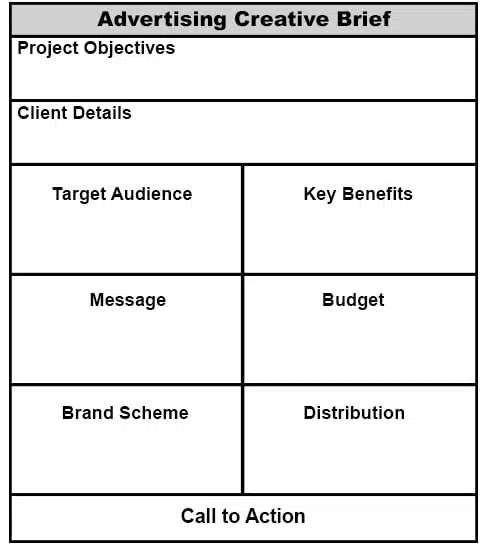
Template for Product Design Creative Briefs
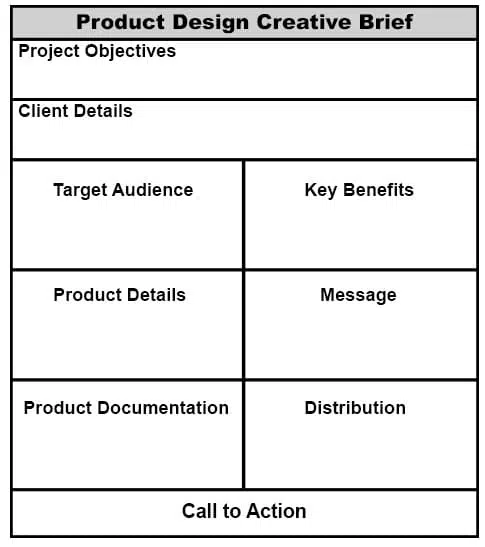
Best Practices in Writing a Creative Brief
- Thorough Yet Concise: A creative brief contains key information. Write it tactically, in short, and concisely. A long creative brief will lose focus and kill the purpose.
- Use Measurable Dimensions to Set Expectations: You cannot control the project’s progress if you cannot measure it. Data makes it easier to track the status and measure progress. Ensure the project has measurable dimensions.
- Use the Right Voice and Tone: The creative brief should represent your organization’s brand and identity. The writing should have a friendly and professional tone. A voice in a creative brief communicates a lot and, if not written well, can hinder communication.
- Incorporate the Team’s Input: Your team will feel recognized and involved in the process, and they will have a feeling of document ownership. Don’t underestimate their contributions. Ideas can come from anywhere.
Conclusion
A creative brief is a document that guides and inspires project contributors, saves time and money, promotes accountability, creativity, communication, and increases product quality. It details the scope, requirements, and expectations of a project.

I am Mohammad Fahad Usmani, B.E. PMP, PMI-RMP. I have been blogging on project management topics since 2011. To date, thousands of professionals have passed the PMP exam using my resources.




